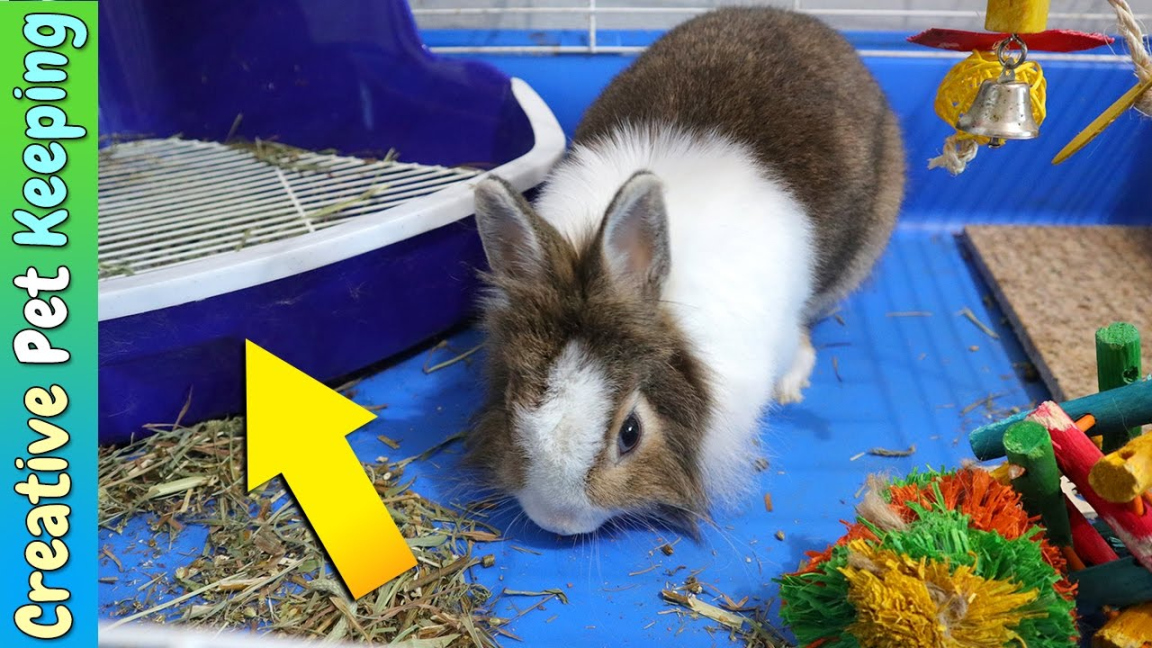How to House Train Rabbits
House training rabbits can be a bit challenging, but with patience and consistency, it is definitely achievable. Rabbits are intelligent animals that can be litter trained just like cats. By following some simple steps and providing the right environment, you can successfully teach your rabbit to use a litter box.

Creating the Right Environment
The first step in house training your rabbit is to create a suitable environment for them. Rabbits need enough space to move around comfortably and a safe area where they can relax. Here are some tips:
- Get a large enough cage or hutch for your rabbit to live in. The cage should be at least four times the size of your rabbit, allowing them to stretch out and hop around.
- Place a litter box in the corner of the cage. Rabbits naturally choose one spot to relieve themselves, so this will help them establish a bathroom area.
- Use a litter box with low sides for easy access. Avoid using litter boxes with high sides, as rabbits may have difficulty hopping in and out of them.
- Line the litter box with newspaper or a litter suitable for rabbits. Avoid using clumping cat litter, as it can be harmful if ingested by your rabbit.
- Provide ample bedding for your rabbit to make them feel comfortable and secure. Hay is a great option for bedding, as it also serves as food for rabbits.
Training Your Rabbit
Once you have set up the right environment, it is time to start training your rabbit to use the litter box. Here are the steps to follow:
- Observe your rabbit’s behavior and identify the spot where they naturally relieve themselves. Place the litter box in that spot.
- When your rabbit starts to use the litter box, reward them with praise or a small treat. Positive reinforcement is key to encouraging your rabbit to repeat the desired behavior.
- If your rabbit has an accident outside the litter box, do not scold or punish them. Instead, gently place them in the litter box as a reminder of where they should go.
- Consistency is crucial. Ensure that the litter box is always clean and accessible for your rabbit to use.
- If your rabbit continues to have accidents outside the litter box, consider confining them to a smaller area until they consistently use the litter box.
Troubleshooting Common Issues
House training rabbits may not always go smoothly, but with a little troubleshooting, you can overcome common issues. Here are some tips:
- Chewing on litter box: If your rabbit starts chewing on the litter box, try using a different material. Some rabbits may prefer a metal or plastic litter box over a wooden one.
- Accidents outside the litter box: If your rabbit continues to have accidents, try moving the litter box to a new spot or providing additional litter boxes in different areas.
- Not using the litter box consistently: Make sure your rabbit has easy access to the litter box at all times. Additionally, clean the litter box regularly to maintain good hygiene.
Frequently Asked Questions (FAQs)
1. Can all rabbits be litter trained?
Yes, most rabbits can be litter trained. However, it may take more time and effort with some individuals compared to others. Patience and consistency are key when training your rabbit.
2. How long does it take to litter train a rabbit?
The time it takes to litter train a rabbit can vary. Some rabbits may learn within a couple of weeks, while others may take several months. It depends on the individual rabbit and their previous habits.
3. Can I use cat litter for my rabbit’s litter box?
No, it is not recommended to use cat litter for rabbits. Cat litter often contains chemicals and additives that can be harmful if ingested by rabbits. It is best to use litter specifically made for rabbits or natural alternatives like paper-based bedding.
4. My rabbit keeps digging in the litter box. What should I do?
Rabbits have a natural instinct to dig, so it is not uncommon for them to dig in their litter box. However, if it becomes excessive, you can try providing a digging box filled with safe materials like hay or shredded paper as an alternative.
Related Articles…
Copyright Notice:
The images displayed here are sourced from the internet, with copyrights held by respective owners. For removal of any copyrighted image, please email us.